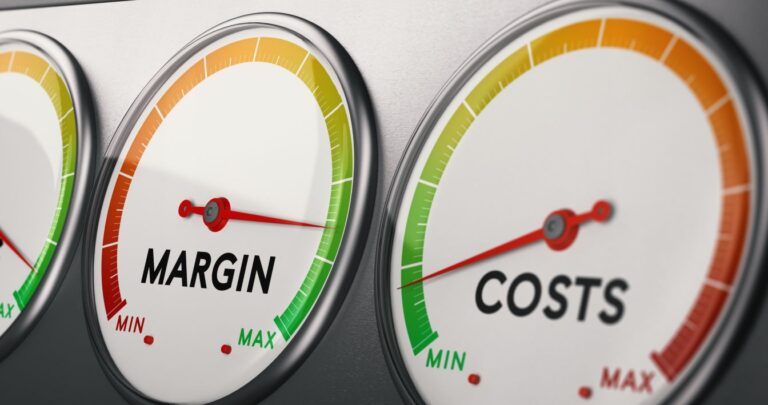It’s not difficult to tell which small trucking business owners don’t have a handle on the economics of their business.
They tend to explain things in generalities.
For example, “It used to cost about $700 to fill up my truck, but now it’s $1,000.” They’ll talk about how many dollars they usually take home in a week, or how they used to get paid a certain amount to go to Albuquerque, but now it’s less.
“About” is a word they use frequently.
On the other hand, owners who truly manage their business understand that generalized data and statistics are meaningless.
These business owners track their expenses by the mile, and they can tell you — to the penny —their actual cost of operations. Some total those expenses every month or maybe every quarter, adjusting their business plan as they go. Some calculate costs for each trip, but small sample sizes aren’t usually as meaningful.
In short: The most successful trucking company owners are intimately familiar with their cost per mile.
Most begin with tracking revenue.
In most operations, rates for some loads are disappointing, while others might be a little more profitable. Knowing your revenue per mile helps you make better decisions. If you’ve been averaging a certain amount per mile and you’re offered a load that comes in lower, you can consider specific factors, such as how this load positions you to pick up the next load or how the timing fits with your need for home time.
Track your fuel costs.
Smart business managers know what their fuel cost is for every mile. They track miles driven and gallons of fuel purchased, and they incorporate fuel surcharge payments received. They have a gross cost per mile for fuel as well as a net cost after applying the fuel surcharge. They track expenditures for DEF, too.
Fuel cost is likely to be the biggest expense an owner operator has, but there are other important items, too.
Factor in costs of repairs, as well as the cost of downtime.
Many truck owners have experienced the shock of a large repair bill — but at the end of the year, they can’t determine the actual impact that expense had on their business’s bottom line. But it takes time to be able to estimate repair costs for the coming year.
If you know your maintenance costs were 12.5 cents per mile last year, you can multiply that by the number of miles you intend to drive to calculate approximately what you’ll spend in the coming year. If you know that you’ll have a major expense, like an engine overhaul, in the coming year, you can adjust your estimate to accommodate the cost.
There is another cost of maintenance, too, that of lost business.
If you know what your typical revenue is per day, you can calculate how much revenue you’ll lose each day your truck is in the shop for repairs. It’s usually better if you can schedule repairs during time you were planning to be off anyway … but things don’t always work out that way.
It’s important to remember that trips to the maintenance facility involve TWO checks; the one you write for the repairs and the one you don’t get for hauling freight while the truck was in the shop.
Tires are a maintenance item, but some owners calculate the cost separately. This is helpful when you need a true picture of what you’re spending on tires, recaps and repairs.
Fixed costs can add up.
Some fixed costs, like truck payments and insurance premiums, can look better or worse depending on the miles you drive.
You may not be able to make your truck payment smaller — but you can reduce the cost per mile by simply driving more miles. Insurance payments, registration and tags, parking spot rent and other expenditures all fit in this category.
Due to post-COVID inflation, interest rates have risen considerably. More of each month’s truck payment is devoted to interest payment than in the past. If you’re planning to purchase new equipment, the down payment required may be higher than it was in the past.
But there’s another area where credit cost can eat up a budget: Revolving credit.
Most credit cards have an adjustable rate of interest. The rate fluctuates depending on several factors, including the interest rate charged by the Federal Reserve to lenders. The average interest rate for credit cards is now in excess of 20%.
On Sept. 18, the Federal Reserve cut its benchmark interest rate by a half-point, an unusually high drop. Unfortunately for those with existing debt, it won’t impact your interest rate very much, if at all.
If you MUST use credit cards for business expenses (and many of you do), pay off the balances as quickly as possible. Know the terms from your credit card company, such as the period when balances are carried to the next month and interest is charged. You could get charged with a month’s interest even though you paid the balance long before the month ended.
If you have several credit cards, consider implementing the “avalanche” method of debt reduction. By paying as much as you can to the card with the highest interest rate and making minimum payments on other cards, you’ll eliminate the largest interest expense sooner. Then you can work on the others.
As you are calculating cost per mile for different items, it might be helpful to track interest expense separately. That helps you identify where you may need a consolidation loan or other action to reduce costs.
Day-to-day expenses also eat into your profits.
Don’t forget to track expenses for meals, lodging, tolls, broker fees and even miscellaneous items like shampoo, water bottles, etc. When it comes to daily expenses, the old adage that the first step to managing something is measuring it definitely applies.
Ask for help if you need it.
There are companies and organizations that offer assistance in tracking your expenses. Some offer forms or programs to assist you in keeping track.
For example, the Owner-Operator Independent Drivers Association (OOIDA)v has a fill-in form that will do the calculations for you if you answer some questions. DAT and Truckstop, two websites known for load boards, offer a wealth of tools and advice — and a lot of it’s free. A quick internet search will turns up several sites that offer downloadable spreadsheets.
If you’re managing your business properly, your take-home pay isn’t simply what’s left over after expenses. (You should know what your own pay costs per mile, too!)
Cliff Abbott is an experienced commercial vehicle driver and owner-operator who still holds a CDL in his home state of Alabama. In nearly 40 years in trucking, he’s been an instructor and trainer and has managed safety and recruiting operations for several carriers. Having never lost his love of the road, Cliff has written a book and hundreds of songs and has been writing for The Trucker for more than a decade.














